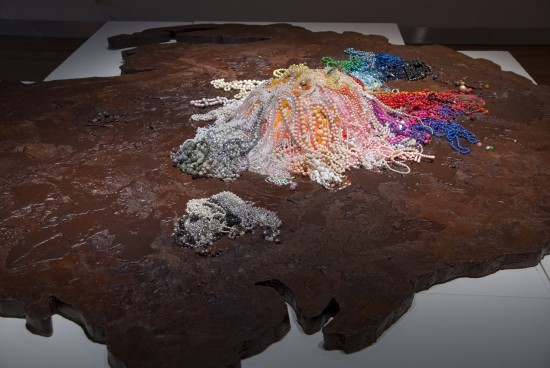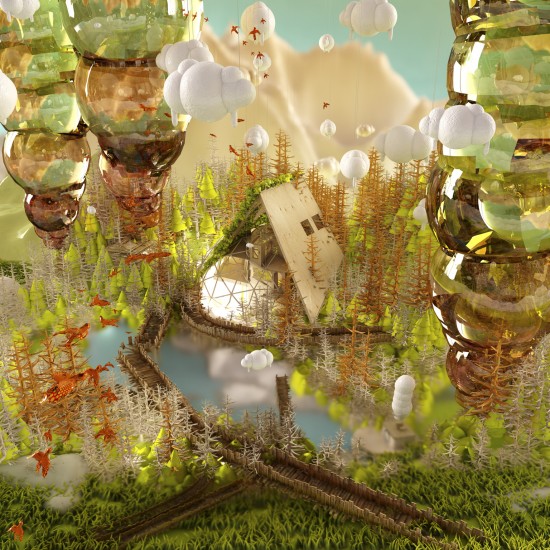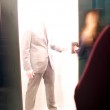With the musical successes of Arcade Fire, Feist, and Do Make Say Think, Canada has been steadily shedding its second-country status and gaining better cultural traction globally. (Don’t know the last example I cited? Focus instead on the almost equal valuation of the Canadian and American dollars, and you’ll realize just how much our neighbor to the north has accomplished in recent years. In fact, the Canadian dollar is projected to surpass its American counterpart in value over 2011. Ouch). Canada pops up in insidious ways, too, with record labels sporting names like Secretly Canadian and, closer to home, the Ontario bar in Williamsburg.
Still, all that hoopla doesn’t mean Cannucks actually want to be in their own country. At least that’s the impression artists Catherine Bolduc and Alex McCleod leave. Both are showing at this year’s PULSE or, more specifically, IMPULSE, the second-floor exhibition that features work made in the last two years. Represented by Gallery SAS and Angell Gallery respectively, the two offer works about imaginary worlds and in the process invite viewers to consider the points at which reality and fiction meet to create the environments we inhabit internally and externally.

"The Lost Island," courtesy Gallery SAS. Photo taken by Paul Litherland.
Of the two, Bolduc more directly investigates the topic. “The Lost Island,” a multimedia piece constructed of chocolate, wax, light, and beaded necklaces of various sizes, dominates one wall of the booth, immediately confronting visitors with its scale and, erm, brownness. Like the topographic maps found in grade-school classrooms, “The Lost Island” hangs in 3-D glory, but unlike those maps, it depicts an imaginary place where inhabitants live free of poverty, famine, PMS, negative thoughts, break-ups, and insomnia, among a long list of other ills large and small that the artist catalogues.
But is such a place imaginary? The title says the island is lost, not fake, so maybe all that’s really needed is a concerted effort to discover this magical place, which (it would serve us right) is probably just off the Jersey shore.

"La lueur des neons chez Kawabata," courtesy Gallery SAS. Photo taken by Paul Litherland.
Definitely on the map is Japan, where Bolduc traveled for a residency. The works produced during her time there—watercolors of a landscape awash in vibrant reds, yellows, oranges, and blues—comment on assumptions she held about Japan prior to her arrival and how the reality of the country squared or did not square with those preconceptions once she stepped off the plane. Not surprisingly, the watercolors that resulted don’t offer a recognizable Japan, but neither do the images stand wholly apart from the corporeal everyday. One offers an expertly rendered life-size, nude female form shod in socks and slippers and surrounded by volcanoes and pearl necklaces, oblique references to Japan’s natural resources. Fantastical as the image may be, it still locates a (headless) figure in a landscape, prompting the question: what does an objective reality look like? Who is doing the looking (and imagining) in that image?
Filled with nonexistent and therefore unidentifiable locations, McCleod’s work ignores those questions altogether. His C-prints instead offer entirely subjective worlds of his own making, brightly hued landscapes caught on photographic paper. Like other visitors to the art fair, I assumed that he built the miniature trees and houses that compose the images, took photos of his constructions, and then manipulated them through Photoshop to produce the framed works on view at PULSE. Not so. The 26-year-old uses ZBrush, a digital sculpting tool, and other architectural software to create his new media works.

"Isle of the Dead," courtesy Angell Gallery
The prankster in McCleod nudges viewers toward the same mistake I made: “Isle of the Dead” appears to have a shimmering gold plastic shower curtain for its backdrop, as if the photo’s subject was made in the artist’s workshop. Of course, that would only be the case if, by “workshop,” we meant the digital space of McCleod’s hard drive. Captured there are entire universes, ones that you and I navigate on a daily basis because I assume you, like me, use Google’s street views to check out unknown corners and neighborhoods. And if in our hard drives contain such terribly real-seeming worlds, then are McCleod’s landscapes any less virtual than those depicted by Bolduc?
Decide for yourself and see both artists’ work for real through Sunday. Gallery SAS and Angell Gallery conveniently occupy booths kitty-corner from one another at PULSE, held this year at Metropolitan Pavilion (123 W. 18th St.).


 RSS
RSS
